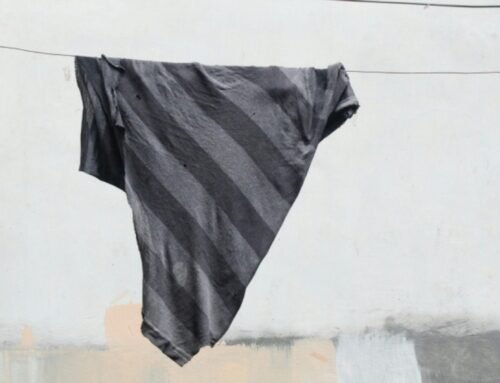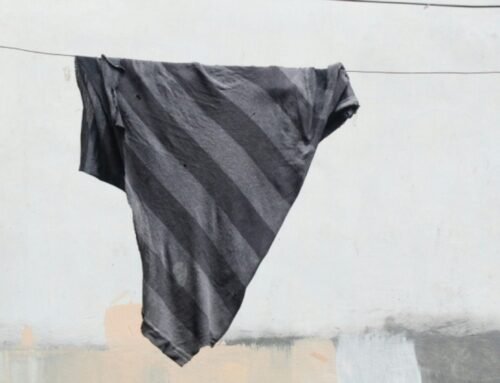Historical Context of Underwear
The history of underwear is rich and varied, dating back thousands of years. Early evidence indicates that the function of undergarments was primarily practical, aimed at providing support and coverage. In ancient civilizations, such as Egypt and Greece, simple loincloths made from linen and other natural fibers served as the foundational pieces of clothing, effectively functioning as the first forms of underwear. These garments, while rudimentary, laid the groundwork for what would evolve into more complex styles of undergarments.
Throughout the Middle Ages, the role of underwear began to shift, influenced significantly by cultural and societal norms. The development of garments like the shirt and the shift signified a gradual evolution, where modesty and fashion began to intertwine. By the Renaissance, undergarments were crafted from finer materials and became a reflection of social status and wealth. Corsets in particular emerged as a pivotal element in women’s wear, accentuating the desired silhouette of the time while simultaneously acting as a foundation garment.
The Industrial Revolution brought about significant advancements in textile manufacturing, resulting in the introduction of new materials and mass production techniques. This era facilitated the creation of more comfortable and diverse types of underwear, allowing wearers to focus on both function and style. By the 20th century, the purpose of underwear had transformed dramatically, with garments such as bras and panties becoming widely accepted as essential elements of daily attire. Each stage of this evolution illustrates the changing attitudes toward modesty, gender roles, and fashion.
As society progressed into the modern age, underwear continued to adapt to the cultural zeitgeist. The emergence of new trends, such as athleisure, challenged traditional views of underwear, emphasizing comfort and versatility. Today, undergarments are not just basic layers; they are significant fashion items that influence personal expression and identity. This historical journey showcases the remarkable transformation of underwear, illuminating its role in both functional necessity and social constructs throughout the ages.
Functional Benefits of Underwear
Underwear plays a crucial role in everyday attire, serving several functional benefits that go beyond mere coverage. One primary purpose is to provide support, particularly for reproductive organs. Specifically designed styles, such as briefs or boxers, help maintain comfortable positioning during various activities, thereby reducing discomfort and enhancing physical performance.
Comfort is another significant aspect, with various types of underwear catering to differing needs and preferences. For instance, seamless options are favored for their ability to minimize chafing, while styles with wider waistbands can alleviate pressure. Athletes often choose performance underwear, which is engineered to wick moisture away from the skin and offer breathability. Such features are essential during physical activities, as they prevent irritation and promote a better overall experience.
Furthermore, hygiene is a paramount consideration in underwear design. Breathable materials are crucial for maintaining optimal conditions, reducing the risk of discomfort or infections. Natural fabrics like cotton allow for air circulation, while synthetic blends with moisture-wicking properties help keep the area dry. Consequently, these aspects contribute to overall health and well-being, underscoring the importance of selecting appropriate underwear for specific situations, such as workouts, casual outings, or formal events.
In terms of material selection, advancements in fabric technology have significantly improved the functionality of underwear. For example, modal or bamboo-based fabrics provide soft, breathable alternatives that further enhance comfort. Overall, understanding the functional benefits of underwear—support, comfort, and hygiene—can guide individuals in choosing the right pieces, thereby enhancing their daily comfort and lifestyle.
Psychological and Social Aspects
The choice to wear underwear goes beyond mere functionality; it has profound psychological implications that can significantly influence an individual’s self-esteem, body image, and confidence. For many, underwear serves as an essential element of their wardrobe, impacting how they perceive themselves and how they believe others perceive them. The fabric, style, and fit can either empower or inhibit an individual’s confidence, fostering feelings of allure or discomfort, which often translates into their overall demeanor in social situations.
Different styles of underwear often amplify self-expression, allowing individuals to project their personal identity and fashion sense. For instance, while some might prefer traditional styles such as briefs or boxers, others may opt for fashion-forward options like thongs or sports bras. These choices reflect not only personal preferences but also an individual’s connection to current fashion trends, cultural influences, and even social status. Therefore, one’s underwear can often become a subtle statement about their lifestyle choices and personality, enhancing social interactions.
In intimate relationships, underwear can play a crucial role in attraction and desirability. It is often associated with moments of intimacy and can significantly influence both partners’ perceptions of each other. The choice of underwear can convey different messages — from the comfort of everyday wear to enticing options that evoke feelings of romance or excitement. This interplay between clothing and social interaction reveals how deeply rooted the psychological impacts of underwear can be, as they not only affect personal feelings but also shape dynamics within relationships.
Ultimately, understanding the psychological and social aspects of underwear extends beyond mere fashion; it delves into a complex web of identity, confidence, and interpersonal communication.
Modern Trends and Innovations in Underwear
In recent years, the underwear industry has undergone a significant transformation, reflecting broader societal shifts and innovations in fabric technology. One of the most notable trends is the increasing emphasis on sustainability. Consumers are increasingly seeking environmentally friendly alternatives, motivating brands to invest in sustainable materials such as organic cotton, bamboo, and recycled fabrics. This move towards eco-friendly production not only caters to the growing consumer demand for ethical fashion but also reinforces a brand’s commitment to reducing its ecological footprint.
Inclusive sizing has emerged as another vital aspect, with brands recognizing the need for a wider range of sizes to accommodate diverse body shapes and types. Many companies are now producing underwear that celebrates body positivity, offering options from petite to plus sizes. This inclusivity challenges the traditional norms of the fashion industry, promoting a message that everyone deserves comfortable and stylish undergarments.
Additionally, gender-neutral options have gained popularity as society progresses towards more fluid definitions of gender. Brands are increasingly offering styles that transcend traditional gender categories, providing consumers with choices that align with their identity. This trend highlights the underwear industry’s responsiveness to cultural changes and the demand for more personal expression through clothing.
Technological enhancements in underwear production are noteworthy as well. Moisture-control fabrics, designed to wick away sweat and improve comfort, are now standard in many athletic underwear lines. Some brands are integrating built-in support features, such as adjustable straps or specialized construction, catering to specific needs without compromising on style.
Marketing and social media also play a pivotal role in shaping consumer perceptions and choices. Influencers and advertisements highlight the latest styles, and consumer engagement on platforms like Instagram and TikTok drives trends. As the market evolves, predictions suggest a continued focus on innovation and consumer-centric design, potentially leading to further advancements in this essential garment.





